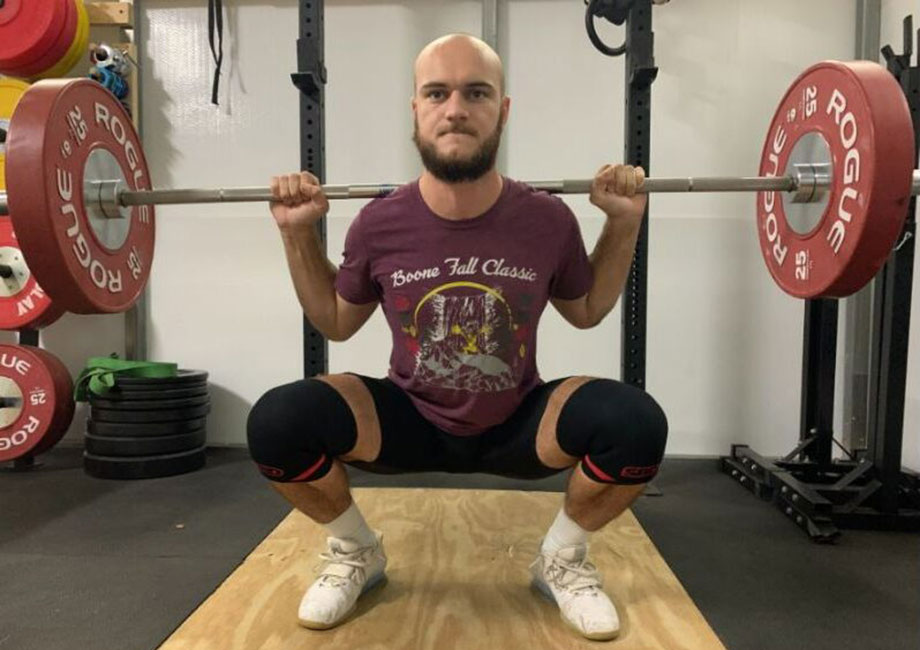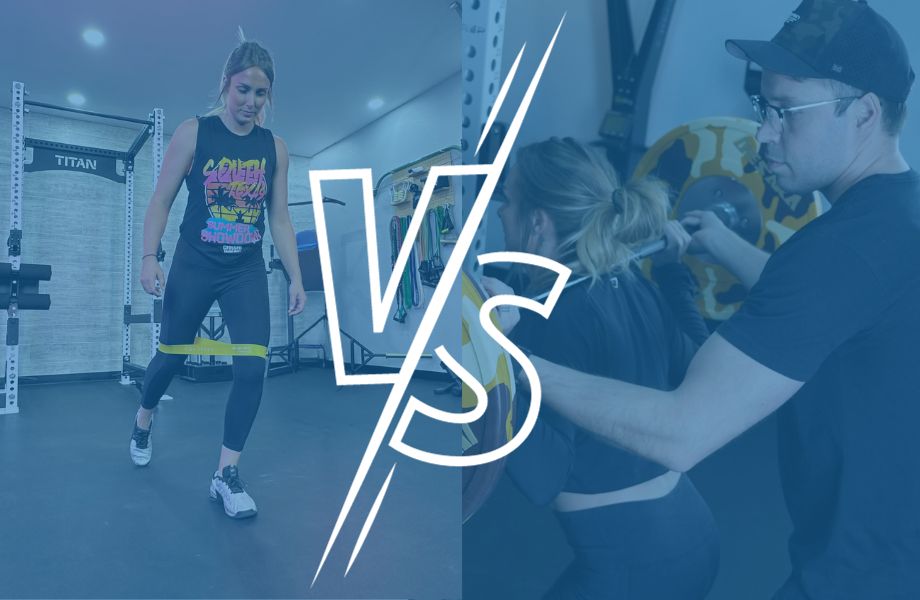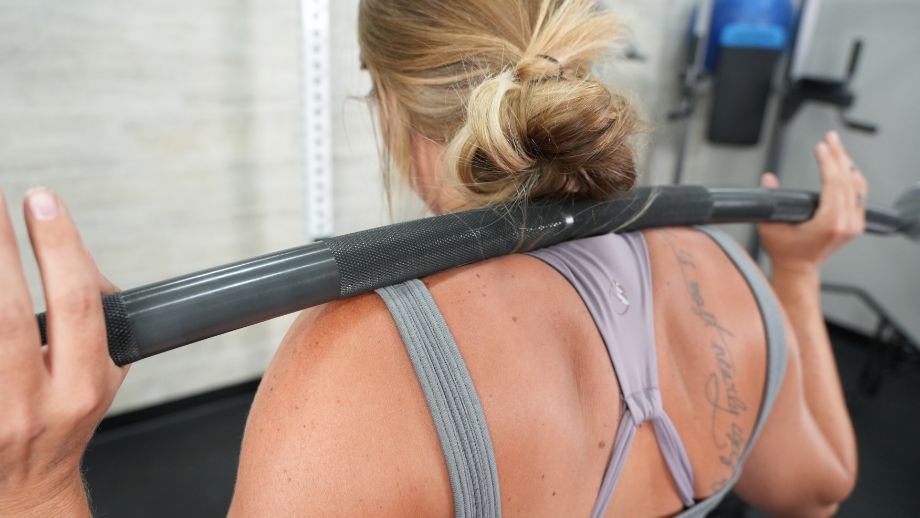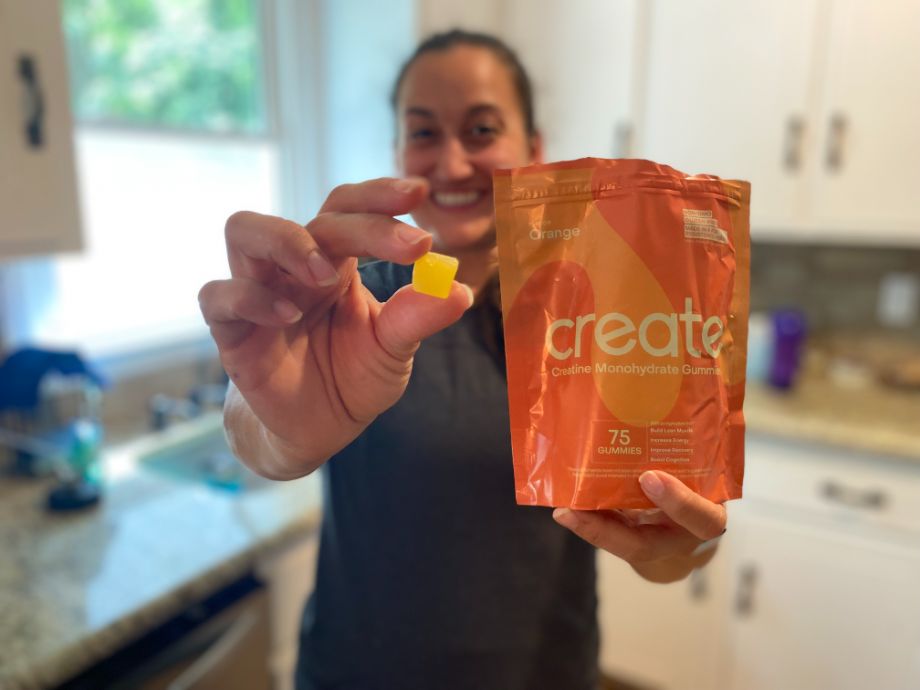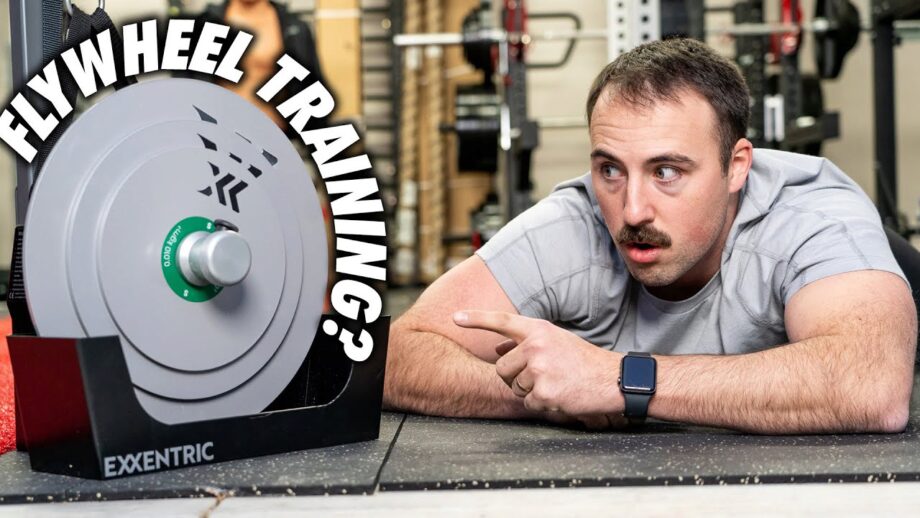Today, I’ll be talking about the king (or queen!) of all bodybuilding exercises…
No, it’s not the bench press. It’s not the deadlift, either. I’m talking about the back squat! Squats are the most popular exercise around to build lower body strength. But when you do them, it’s important to get your form right because not doing so can limit your gains. Or, even worse, lead to injury.
RELATED: What Muscles Do Squats Work?
And that’s what I’m here for. As a certified personal trainer (CPT), I’ll give my top tips on how to get the back squat right, go through the benefits of squats, and finish off with some variations for you to try. Once you’ve mastered the back squat, leg day will never feel like a chore again. You have my word!
How To Do The Back Squat Exercise
Muscles worked: Quadriceps, hamstrings, glutes, calves, adductors, lower back, core
- Set the bar to the correct height on a squat rack, then add your preferred weight.
- Step underneath the bar in either a high-bar or low-bar position (more on this below). You’ll want your feet firmly planted on the floor, taking hold of the bar with your hands as close to your shoulders as possible (while still being comfortable).
- Brace your core and unrack the barbell. Take one or two steps backward and adjust your feet to be hip-width apart.
- Stick your chest up, then squat down until your quads are at least parallel to the floor, if not deeper. Ensure your knees are in line with your toes here.
- Reverse the motion by driving your heels into the ground to return to the starting position.
- Continue for the desired number of reps.
RELATED: Best Squat Racks
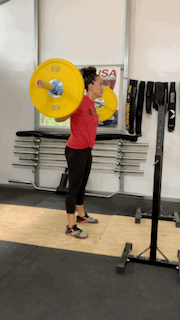
Trainer Tips for Form
Ready to give the back squat a go? Great. Here are a few tips to make the most out of this movement:
Decide On Your Bar Position
Before you do anything, decide whether you’ll be doing high-bar or low-bar squats. With the high bar, the bar rests on your trapezius and rear deltoids. With the low bar, the bar is across the shoulder blades. High-bar squats are more common because they feel more natural (I do high-bar squats myself!), but some find the low-bar position puts less strain on their knees.
A 2021 study by the International Journal of Environmental Research and Public Health1 found that low-bar squats could be the best option when lifting heavy loads is the goal. If your aim is to fire up your glutes, then opt for the high-bar position, where using one of the best safety squat bars is the preferred modus operandi.
Keep Your Feet Planted On The Floor
During a back squat, your feet must stay attached to the floor at all times. If they don’t, this could put pressure on your knees and lead to injuries. One of the most common reasons your heels tend to lift off the ground is because your stance is too narrow. Position your feet slightly wider apart and point your toes slightly outward. Stretching beforehand helps, too.
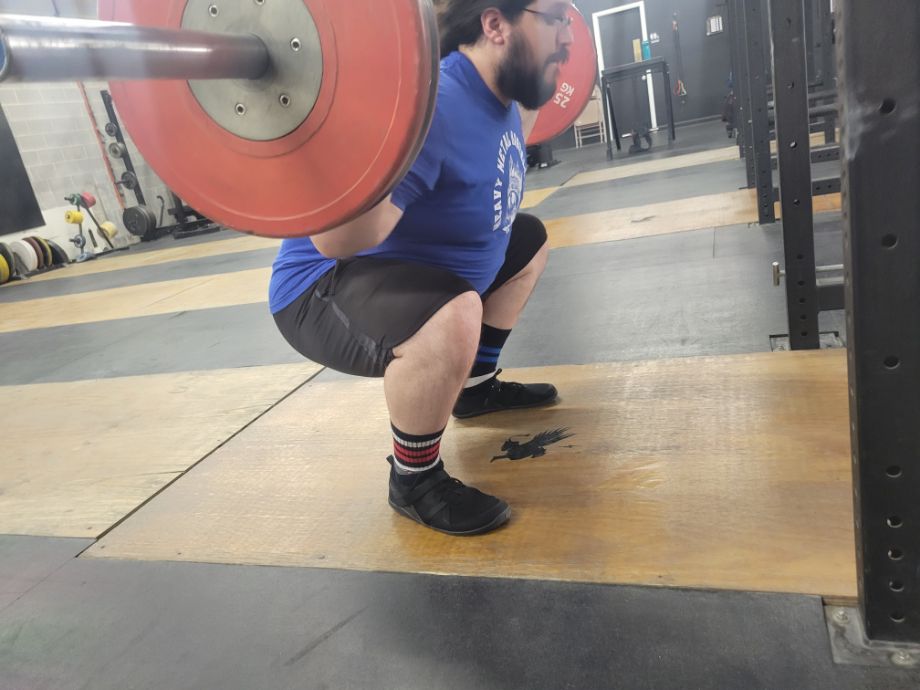
Keep Your Chest Up
On the way up and down, you don’t want heavy loads on your back when your chest isn’t up—this might pull you forward and put unnecessary pressure on your spine. Upper back activation exercises help with this (think barbell rows, dumbbell rows, and pull-ups). Bracing your core by taking a big breath before descending also helps to keep your chest raised.
Keep Your Knees In Line with Your Toes
Remembering to keep your knees in line with your toes stops them from caving in. This can help you to squat deeper and with more load and potentially prevent injuries. If you’re finding this difficult, work on your mobility (especially in your ankles and hip joints). For example, glute bridges and lunges are great exercises to add to your warm-up.
RELATED: Best Warm-Up Exercises
Back Squat Benefits
You’re probably wondering, “Why should I do the back squat anyway?” There are several benefits of squats, including:
Builds Leg Strength And Size
The main benefit of doing squats is for strength and size in the leg muscles. No gym-goer wants chicken legs, do they? There are, of course, other exercises that build muscle mass in the legs. But back squats are the most popular for a reason (hint: they’re the best!). Not only this, but they help strengthen your core at the same time.
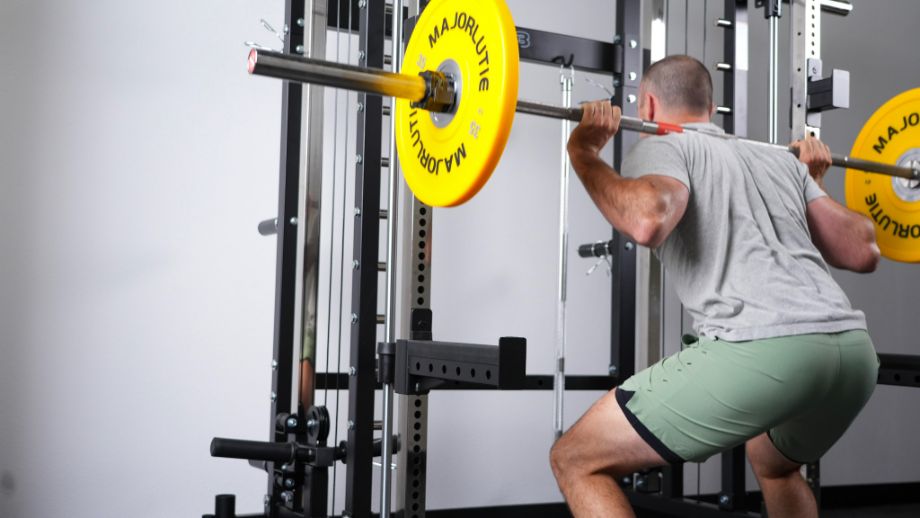
Promotes Fat Burning
Back squats recruit many muscles in the lower body at once. Compared to isolation exercises (think calf raises or crunches), compound exercises such as squats burn more calories. If you aim to burn fat, regularly doing back squats can only be a good thing. The more muscle you have, the more calories you burn throughout the day, even while resting.
Increases Bone Density
A 2013 study by the Journal of Strength and Conditioning Research2 found that women with osteoporosis or osteopenia who squatted three times a week for 12 weeks showed significant improvement in their bone density and bone mineral content. This is especially important as we age when bone breakdown is more common.
Common Back Squat Mistakes
Below are the three common back squat mistakes I look out for when training that you’ll want to avoid:
Not Going Low Enough
Don’t be one of those people who load the barbell with plates and then do quarter squats (if that!). Contrary to popular belief, it’s better to squat lighter for depth than it is to squat heavier for no depth. Always aim for parallel, if not lower. If you find this challenging, add some mobility exercises to your warm-up, especially those for the ankles and hips.
Not Bracing Your Core
During the eccentric and concentric phase of the squat (which is when you go down and back up), you should be holding your breath. That’s right—you’re not meant to fully exhale as you drive up through your heels. Instead, you’ll do this once you’re standing. This helps to prevent injuries because it provides added support for your lower back.
Skipping Your Warm-Up
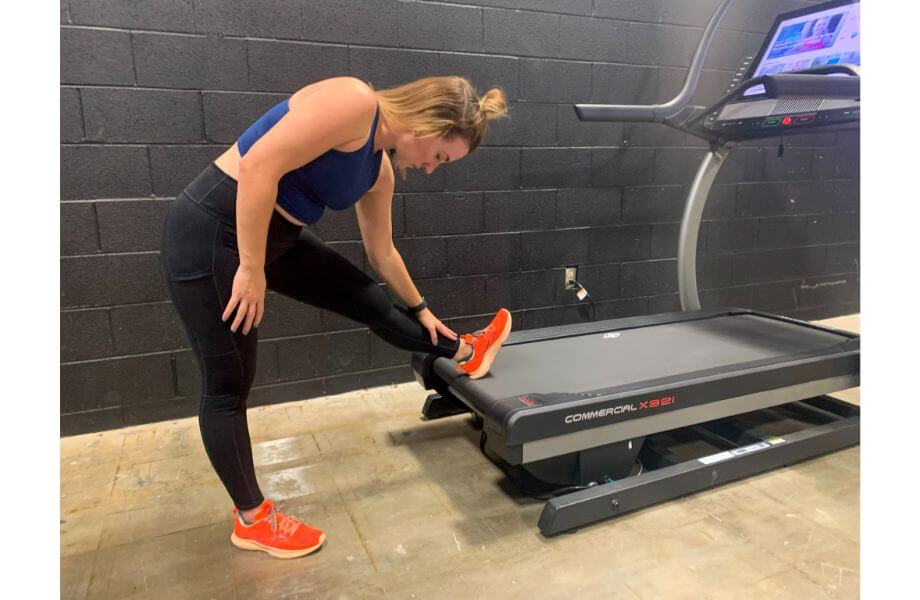
On some exercises, you may be able to get away without warming up, especially if you’re in a rush. I don’t advise it, but life happens. With the back squat, not warming up is one of the worst mistakes you can make. Do some cardio and dynamic stretches, then lift lighter loads on the back squat before moving onto heavier weights. You’ll thank me for it later.
RELATED: Treadmill Warm-Up
Back Squat Variations and Alternatives
Although the back squat is a fantastic exercise, there are many reasons why you may want variations. You might not have a barbell and weight plates, so you want to replicate the movement with a dumbbell or kettlebell. Some lifters find that the back squat causes knee pain.
Or maybe you’ve been doing back squats regularly for a while and want to add some variety. Regardless of your reasons, here are my favorite back squat alternatives:
Pause Back Squat
Why do it: Pause back squats require more balance and explosiveness than regular back squats. A 2018 study by the European Journal of Applied Physiology3 found that when it comes to muscular hypertrophy, pause back squats may even be superior to traditional squats.
How to do it:
- Get into the barbell back squat position, with your feet flat on the ground and hands firmly holding the bar.
- Unrack the barbell, then take a couple of steps backward. Position your feet hip-width apart.
- Tense your core and squat down until your thighs are parallel to the floor. Once you’re in the bottom position, pause for two to three seconds.
- Push your feet through the floor to go to the standing position.
- Keep going for repetitions.
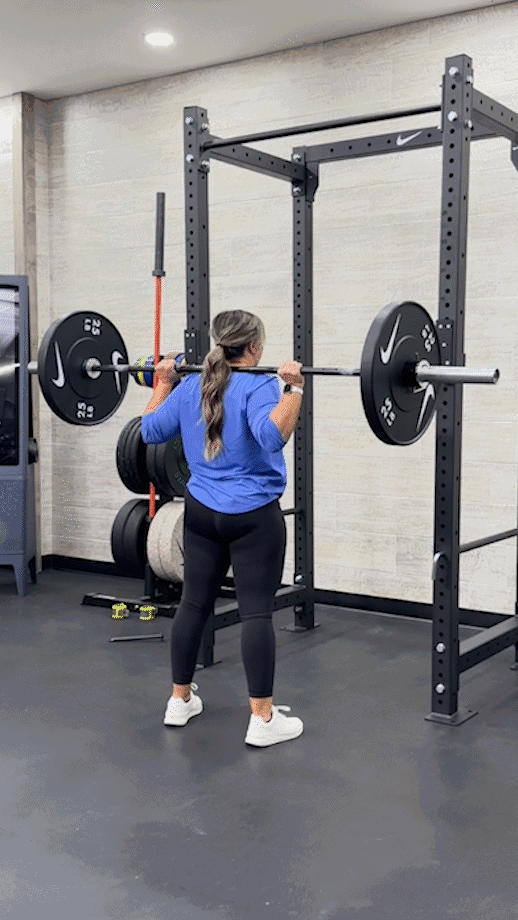
Tempo Back Squat
Why do it: You can build muscle in the lower body with less weight than a traditional squat. This is because the time under tension is increased with this exercise. If you have weak tendons or ligaments, this exercise may strengthen them because of the slower squatting movement.
How to do it:
- Add your preferred weight plates to the bar, then set up as you would with a regular back squat.
- Once the bar is off the rack and you’re in position, start the tempo back squat. Here, you’ll want to slow the downward (aka eccentric) movement to a three to five-second count.
- When you reach the bottom, use your feet to push up to the original position.
- Squat for reps, then return the bar to the rack.
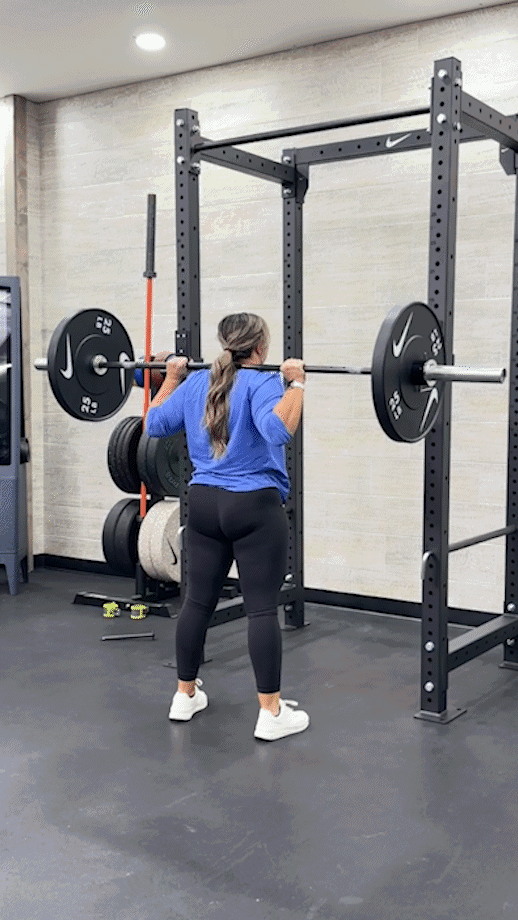
Goblet Squat
Why do it: Goblet squats work the same muscle groups as back squats but don’t require a barbell and weight plates. As well as your lower body, this movement targets your upper body, especially your upper back and shoulders. The goblet squat is also an excellent exercise for beginners to learn proper form.
How to do it:
- Stand tall with either a single dumbbell or kettlebell in both hands in front of your chest. You’ll want your feet to be slightly wider than shoulder-width apart and toes facing forward.
- With a neutral head position and braced core, squat down as though you’re sitting on a chair. Push your knees out and in line with your toes.
- Lower down until your quads are at least parallel to the floor. Hold here.
- Drive through your feet to stand back up.
- Repeat for repetitions.
RELATED: Best Kettlebells
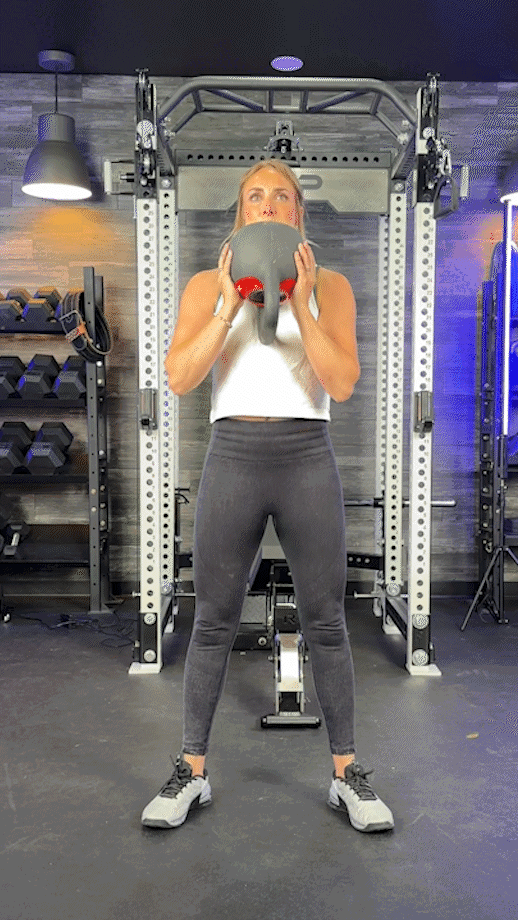
Box Squat
Why do it: You may be able to lift heavy weights with a box squat because the range of motion (ROM) is shorter than a back squat. This shorter ROM can help those accounting for pain in the knee joints. Some lifters also find that their back squat improves by doing this exercise.
How to do it:
- Place a plyometric box or flat weight bench behind you on the squat rack.
- Get into the regular back squat position, then unrack the bar. Step back until you’re close to the box, adjusting your feet so they’re hip-width apart.
- With your chest up and core engaged, squat down until you’re sitting on the box.
- Pause for a second, then drive through your heels to stand up.
- Continue for repetitions.
Note: The above is the barbell version of the box squat. You can also do this strength training exercise with dumbbells, kettlebells, or even your body weight.
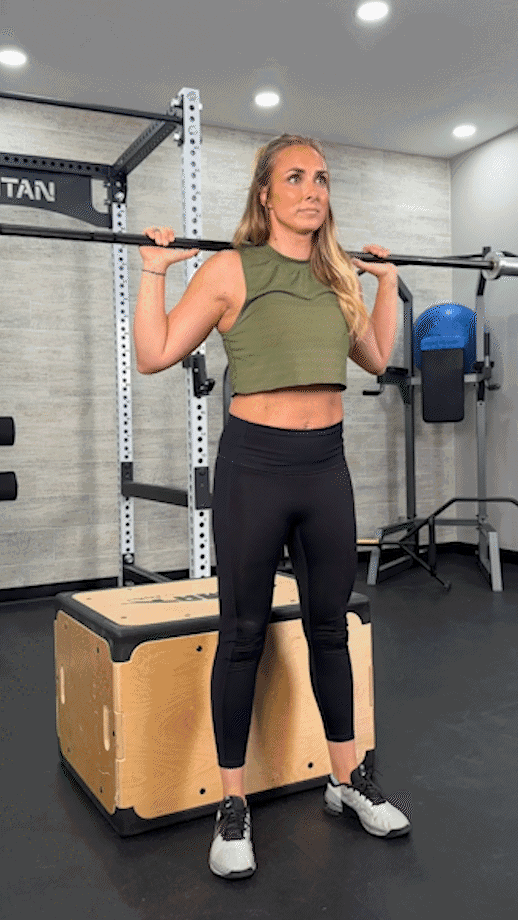
Front Squat
Why do it: For those who feel lower back pain with the back squat, the front squat is worth trying because of the anterior position of the barbell. A 2009 study by the Journal of Strength and Conditioning Research4 found that front squats may be advantageous for individuals with knee problems such as meniscus tears and long-term joint health.
How to do it:
- Adjust the squat rack so the bar is at shoulder height, then add the necessary weight.
- Step underneath the bar, resting it on your upper chest. You’ll want your feet firmly planted on the floor and your hands shoulder-width apart.
- Unrack the barbell, then take a couple of steps back. Position your feet hip-width apart.
- With your elbows high and core tense, lower down into a squat. Ensure that your heels stay on the floor throughout.
- Pause, then return to the starting position.
- Squat for repetitions, then re-rack the barbell.
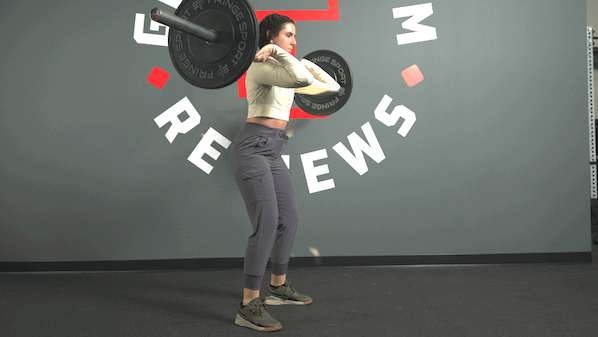
Hack Squat
Why do it: Using a hack squat machine is ideal for beginners or those with injuries because you don’t have to think as much about your squat form. At the same time, it’s still an effective exercise to build muscle mass in the legs, gluteus, core, and lower back.
How to do it:
- Add weight plates or choose your desired weight, depending on the machine.
- Get onto the machine, with your feet shoulder-width apart and shoulders underneath the shoulder pads.
- Grab the handles, then straighten your legs to get into the starting position.
- Squat down by bending your knees, keeping your head neutral and chest up.
- When your thighs are parallel to the floor, push with your heels to stand.
- Hack squat for reps.
Useful Back Squat Equipment Accessories
Now you know how to do the back squat movement pattern, let’s talk about accessories. Here are three pieces of equipment that I recommend to help make your back squat more comfortable:
Knee Sleeves
If you’re like me, knee pain during squats is real (I’m getting older!). The best knee sleeves provide compression and stability to the knee joints and can help lift heavier weights. I prefer thicker knee sleeves for back squats as long as they don’t restrict my movement. Take a look and see which could work for you.
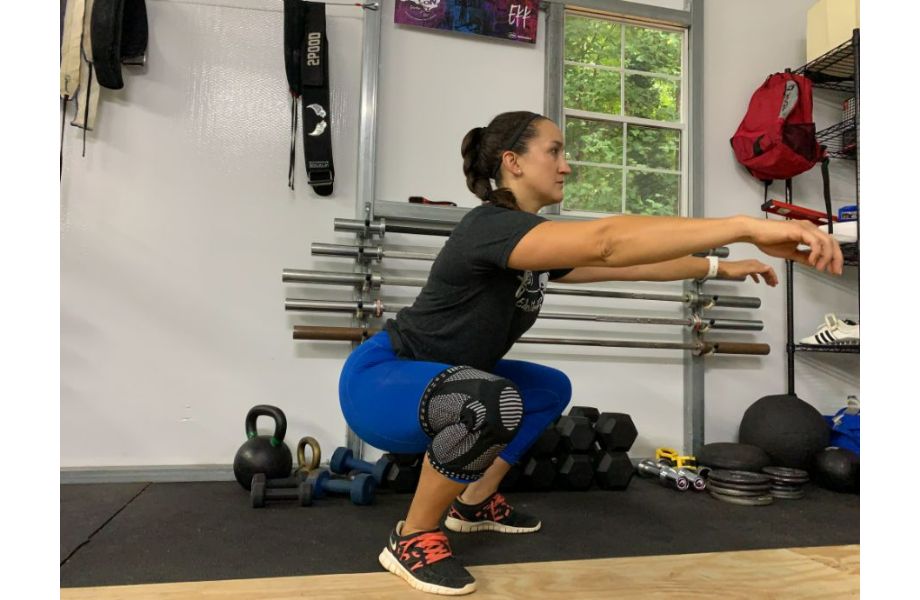
Squat Shoes
Some powerlifters prefer to squat without shoes at all. If that’s you, great. But, if your gym doesn’t allow this or you want the extra grip or elevation, consider a pair of the best weightlifting shoes. Squat shoes vary from deadlift shoes because, for the latter, you need something flat with a thin sole. However, when performing back squats, most lifters prefer a higher heel because it helps with ankle mobility.
A Quality Squat Rack
Quality squat racks—such as the Bridge Built Phoenix Squat Rack—can make a big difference. A good squat rack is stable, durable, and versatile. Over time, you can add attachments to make it more than just a place where you do squats. Other resistance training exercises you can do include bench presses, dips, pull-ups, barbell lunges, and more.
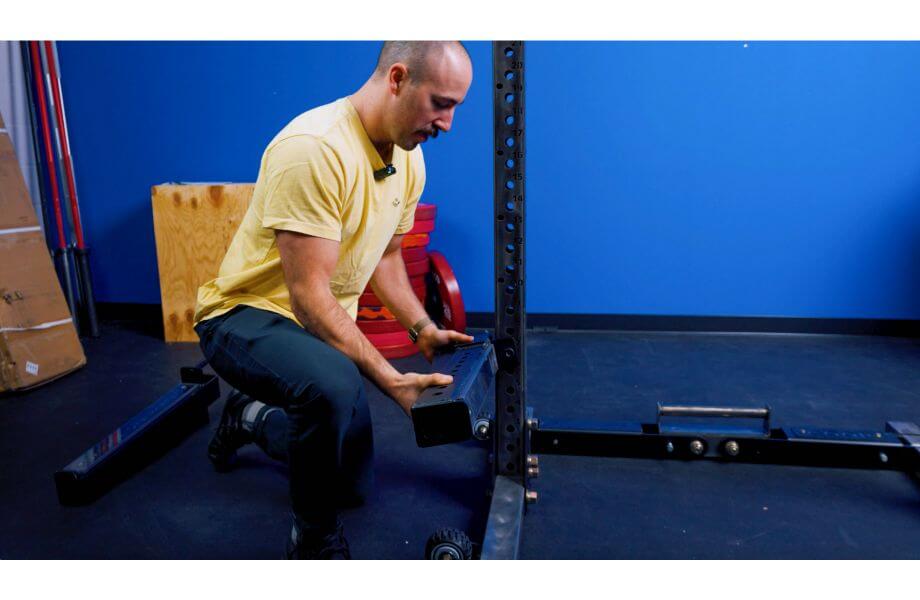
Back Squat: FAQs
What is the back squat good for?
The back squat is a dynamic exercise that works the quads, hamstrings, glutes, calves, adductors, lower back, and core. It’s a functional exercise because you perform squats regularly in everyday life (think sitting down on a chair). Compound movements such as squats also burn a lot of calories, which is helpful if you need to be in a calorie deficit to lose weight (especially when combined with a healthy eating plan).
Is back squat good for beginners?
If you’re a beginner, I’d suggest starting with bodyweight squats, hack squats, and goblet squats before moving on to the back squat. You don’t need to do these variations for long—just enough so you understand your body mechanics and how the squat works. After this, beginners can do back squats. Start light and make sure you squat parallel or lower.
How many squats should I do a day?
I don’t believe you should be squatting every day, especially if you’re doing multiple sets of squats. Your legs—like every other muscle group—need to be rested. At most, train your legs twice per week and do three to five sets of squats each time. Depending on your fitness goals, you’ll want to do between five and 20 repetitions for every set.
Are back squats better than leg press?
Leg presses are easier for beginners and may allow for some serious weight that you can’t do with a squat. That said, you may need access to a leg press machine—there is also a way to do a leg press at home—and they aren’t as functional as squats.
Squats can be done anywhere and work your core and lower back (as well as your legs). However, getting the form right is more difficult, and the risk of injury is higher. There are pros and cons to each. In my workout routine, I like to include both squats and leg presses.
References
- Kristiansen E, Larsen S, Haugen ME, Helms E, van den Tillaar R. A Biomechanical Comparison of the Safety-Bar, High-Bar and Low-Bar Squat around the Sticking Region among Recreationally Resistance-Trained Men and Women. Int J Environ Res Public Health. 2021 Aug 6;18(16):8351. doi: 10.3390/ijerph18168351. PMID: 34444101; PMCID: PMC8392107.
- Mosti MP, Kaehler N, Stunes AK, Hoff J, Syversen U. Maximal strength training in postmenopausal women with osteoporosis or osteopenia. J Strength Cond Res. 2013 Oct;27(10):2879-86. doi: 10.1519/JSC.0b013e318280d4e2. PMID: 23287836.
- Korak JA, Paquette MR, Fuller DK, Caputo JL, Coons JM. Effect of a rest-pause vs. traditional squat on electromyography and lifting volume in trained women. Eur J Appl Physiol. 2018 Jul;118(7):1309-1314. doi: 10.1007/s00421-018-3863-6. Epub 2018 Apr 11. PMID: 29644392.
- Gullett, Jonathan C; Tillman, Mark D; Gutierrez, Gregory M; Chow, John W. A Biomechanical Comparison of Back and Front Squats in Healthy Trained Individuals. Journal of Strength and Conditioning Research 23(1):p 284-292, January 2009. | DOI: 10.1519/JSC.0b013e31818546bb


